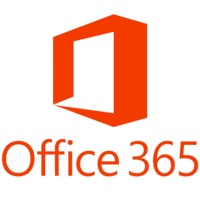
Latest Version
0.31
June 02, 2024
samperson
Games
Windows
54,218
Paid
Windows 10, 11
Report a Problem
More About Desktop Goose
In an era dominated by productivity tools and time management apps, the rise of the Desktop Goose is a refreshing, albeit chaotic, deviation. This quirky, unpredictable software has captured the hearts of thousands by transforming their orderly digital landscapes into playgrounds of amusing havoc. What started as a simple idea has become a phenomenon, resonating with users looking for a unique, humorous distraction from their daily grind.
The Genesis of Desktop Goose
The brainchild of indie developer Sam Chiet, Desktop Goose was launched in January 2020. Chiet, known for his innovative and often whimsical creations, designed the software to mimic the antics of a real goose on your desktop. The idea is simple yet brilliant: a virtual goose roams freely across your screen, dragging memes, leaving muddy footprints, and occasionally honking—an embodiment of delightful mischief.
Chiet’s inspiration for the project came from the success of "Untitled Goose Game," a popular indie video game released in 2019, where players control a mischievous goose wreaking havoc in a small village. Desktop Goose captures the essence of this game but brings the chaos directly into your workspace, blurring the lines between work and play.
How Desktop Goose Works
Once installed, Desktop Goose introduces a small, white goose onto your computer screen. The goose’s behavior is governed by a set of randomized actions programmed into the software. It might drag a funny image across your screen, leave a trail of muddy footprints on your desktop, or pop up a message reminding you that the goose is in charge.
The beauty of Desktop Goose lies in its unpredictability. The goose's actions are entirely random, ensuring that each interaction is unique. Users can modify the goose's behavior by tweaking the settings or adding custom memes and messages, making the experience highly personalized.
The Appeal of Digital Disruption
In a world where digital tools are designed to streamline tasks and maximize efficiency, the appeal of Desktop Goose lies in its ability to disrupt. The software offers a playful counterbalance to the often sterile and monotonous nature of digital work environments. For many, the goose’s antics provide a welcome break from the pressures of productivity.
The popularity of Desktop Goose can be attributed to several factors:
Nostalgia and Novelty: Desktop Goose harkens back to the era of desktop companions, like the iconic Clippy from Microsoft Office or BonziBuddy. These programs were designed to assist users but often ended up being more of a nuisance. Desktop Goose embraces this nuisance factor wholeheartedly, turning it into a form of entertainment.
Stress Relief: In a high-stress, always-on work culture, the unexpected interruptions of the Desktop Goose can be a source of laughter and stress relief. It reminds users not to take their work too seriously and to enjoy moments of levity throughout the day.
Customization and Creativity: Users have the freedom to customize the goose’s behavior, adding their own memes, messages, and images. This level of personalization enhances the software’s appeal, allowing users to inject their own sense of humor into their daily routines.
Community and Sharing: The Desktop Goose phenomenon has fostered a vibrant online community. Users share their goose’s antics on social media platforms, contributing to a collective sense of joy and amusement. This communal aspect has helped the software gain a cult following.
The Impact on Productivity
While the Desktop Goose is undeniably entertaining, its impact on productivity is a double-edged sword. For some, the goose’s interruptions can be a refreshing break that boosts creativity and reduces stress. For others, it can be a distraction that hampers their ability to focus on tasks.
To address this, Chiet included features that allow users to control the frequency and type of interruptions. For example, users can adjust the goose’s activity level or disable certain actions altogether. This flexibility ensures that Desktop Goose can be as disruptive or as benign as the user desires.
Beyond the Goose: The Future of Digital Distractions
The success of Desktop Goose highlights a growing trend towards playful digital distractions. As remote work becomes more prevalent and digital environments more pervasive, there is a rising demand for tools that inject fun and spontaneity into the daily grind. Developers are increasingly exploring ways to integrate humor and play into software design, recognizing the value of these elements in enhancing user experience.
The concept of “productive procrastination” is gaining traction, where brief, enjoyable distractions are seen as beneficial breaks that can improve overall productivity. Desktop Goose fits neatly into this paradigm, offering a lighthearted diversion that can refresh the mind and spark creativity.
Conclusion
Desktop Goose is more than just a quirky piece of software; it’s a cultural phenomenon that challenges conventional notions of productivity and digital interaction. By introducing an element of playful chaos into the structured world of desktop computing, it has carved out a unique niche that resonates with users seeking a balance between work and play.
As we navigate the complexities of modern digital life, the success of Desktop Goose serves as a reminder that sometimes, a little disruption is exactly what we need. Whether you view it as a charming companion or a delightful nuisance, there’s no denying that the Desktop Goose has waddled its way into the hearts—and screens—of users around the world.
In a landscape where efficiency is king, the goose reigns supreme as the jester, bringing laughter and unpredictability to our orderly digital domains. Its legacy is a testament to the enduring appeal of fun and mischief in a world that often takes itself too seriously.
|
|
|
|




























 Games
Games Desktop Enhancements
Desktop Enhancements Social & Communication
Social & Communication DVD & Blu-ray
DVD & Blu-ray Security & Anti virus
Security & Anti virus Office & Business Tools
Office & Business Tools Videos & Editing
Videos & Editing System Tuning & Tools
System Tuning & Tools File Transfer and Networking
File Transfer and Networking Developer Tools
Developer Tools Travel & Navigation
Travel & Navigation Browsers & Plugins
Browsers & Plugins VPN
VPN Photo & Design
Photo & Design